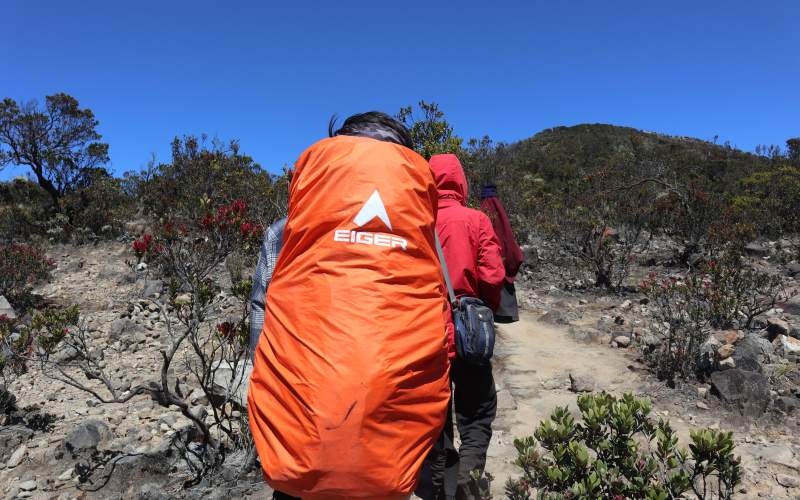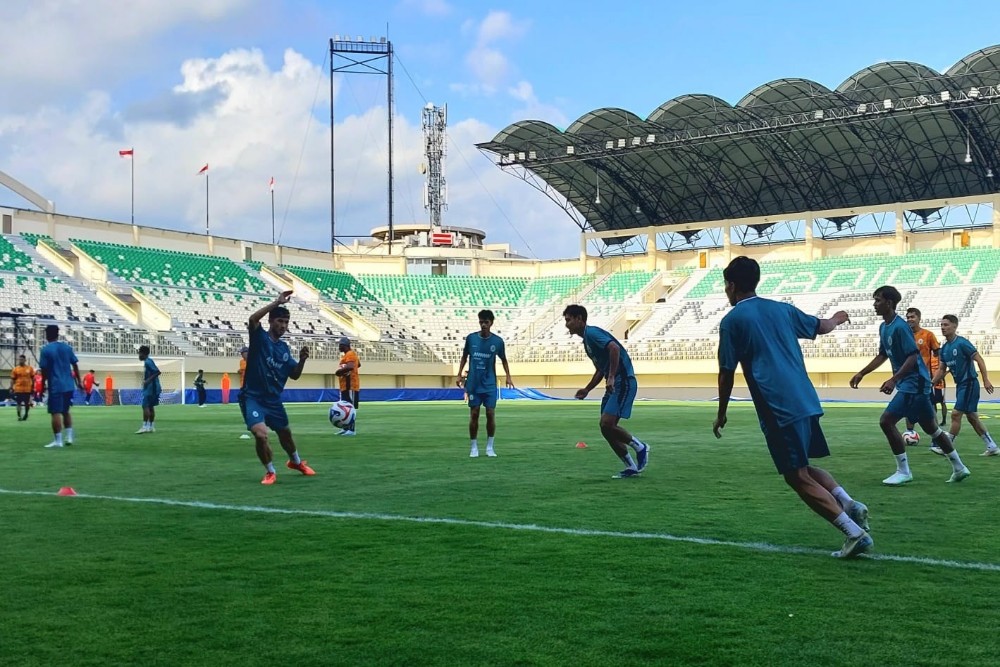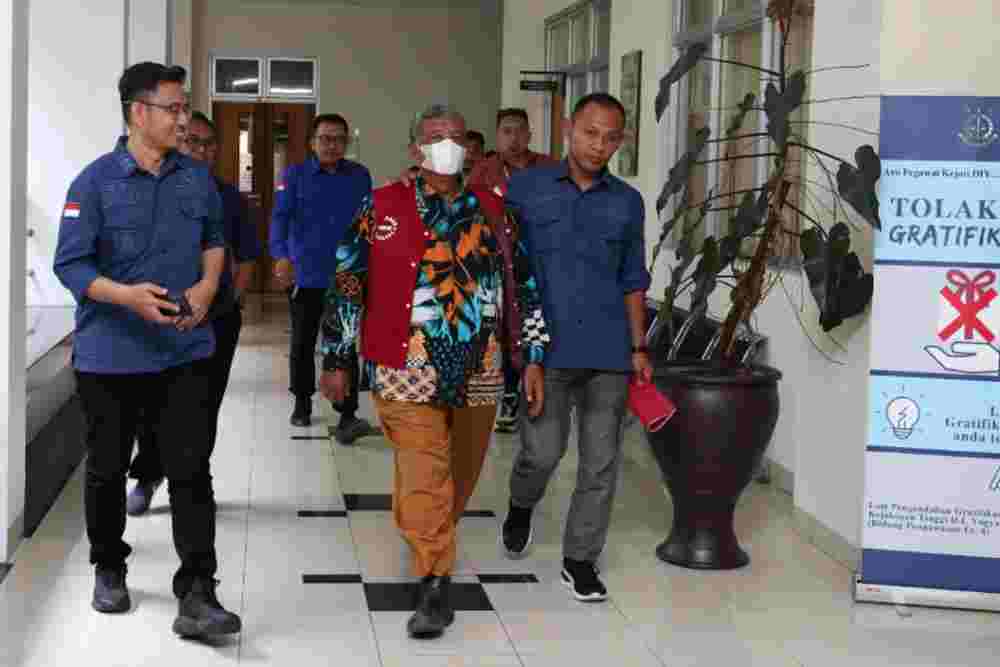Tragedy has struck again for former NRL star Matt Nable, with another family member diagnosed with motor neurone disease (MND) after the deadly and incurable condition killed his younger brother.
Nable starred for the Manly-Warringah Sea Eagles and South Sydney Rabbitohs in the early 1990s, later playing in England with Carlisle and the London Broncos.
After retiring from sport, he moved into writing and acting, penning and starring in the 2007 rugby league drama The Final Winter and appearing in films like Killer Elite and Riddick.
He also became a popular voice on Fox Sports, known for his dramatic NRL promos and commentary, while continuing to act in television dramas like Underbelly: Badness, Arrow and Mr Inbetween. He most recently starred in Netflix series Apple Cider Vinegar, about fake wellness guru Belle Gibson.
However, tragedy struck when his younger brother Aaron was diagnosed with motor neurone disease in July 2020.
The former amateur boxing champion and father-of-three battled the condition for nearly four years before passing away at home on March 3, 2024.
Matt Nable lost his brother Aaron (pictured together) to incurable MND in March last year
After farewelling his brother in 2024, Nable has now revealed his cousin Luke (pictured) is also suffering from the disease
Hundreds mourned Aaron Nable in 2024 at his funeral after he lost his battle with MND
His funeral drew hundreds of mourners, including sports legends and Fox Sports colleagues, who gathered at the Mary Immaculate Church in Manly to honour his memory.
Matt spoke of Aaron's kindness, loyalty and deep love for his children, calling him one of the best men he'd ever known.
The Nables have since raised more than $100,000 for MND research and support for Aaron's family.
Now, in a heartbreaking case of history repeating itself, Nable has revealed another family member has been diagnosed with the deadly and incurable disease.
'Luke Nable. 34. My first cousin Alison's boy. Diagnosed with MND,' Nable posted to social media in a sombre post on Monday.
'My brother and I were with him today talking with Aaron's doctor Dominic Rowe. This young man held himself with such dignity and showed such courage in the face of what he's confronted with.
'This f***ing disease is not rare. And it's environmental. Cousin, we are with you the whole way. And Azza is holding your hand mate.'
MND is a progressive neurological disorder that attacks the nerve cells controlling muscles used for movement, speech, breathing and swallowing.
Nable's moving tribute to his cousin highlights the growing MND crisis that's affecting more Aussie families every year
Nable (second from right) and his family have raised more than $100,000 for MND research and support for his departed brother since his death
As the nerves degenerate, muscles weaken and waste away, eventually leading to complete paralysis.
MND is terminal, with most people dying within two to five years of their diagnosis.
Nable has already received a flood of supportive messages after the latest hammer blow to his family.
'So sorry to hear, mate. My childhood friend and his dad had it. Horrible disease. I'm a massive advocate for MND awareness. Luke will fight just like Aaron did. All of Australia is behind you guys in this fight. Sending love to you all,' one friend commented.
Another pointed out how shockingly common the disease is becoming.
'I feel for you all. We have had four family members who have had this insidious disease,' they posted.
'All the best to Luke and all affected by this awful news. I saw the strength, love and support of the Nable family with Azza,' added another.
Nable continues to raise funds and awareness in the hope of discovering a cure for MND, which he previously said was becoming more prevalent in the modern world.
'One in 200 people gets MND,' Nable said.
'In 1985, it was one in 500, so there's something environmental that's causing that spike. And it's important they find a cure, because what it does to a human being is catastrophic.
'It's the definition of sadness.'
Breakthrough prevention hope for motor neurone disease: Baffling epidemic in rural Australia may be the key to beating this unfathomably cruel disorder
By Bek Day
In his younger years, Andrew Danson's father Peter played on a football team.
This is hardly out of the ordinary for a young man from Australia - but the significance of where his dad played footy became important at the end of his life, and could hold the key to understanding a disease that has baffled doctors for more than a century.
'He passed away from motor neurone disease in 2020,' explains Andrew.
MND is a rare neurodegenerative disorder affecting the nerves that communicate between the brain and muscles. There is no cure and doctors don't know the cause.
Andrew pauses, then adds: 'Four of the men who played on his football team went on to develop motor neurone disease as well.'
Peter and his footy mates played in Mildura, a town on the banks of the Murray River in Victoria. And they are not the only men with links to the Murray to die from MND.
Griffith resident Belinda Alcott's father Warren, known affectionately as 'Woz', knew something wasn't right when he started feeling weakness in his arms.
Diagnosed with kidney cancer and MND at the same time, Woz - who had spent portions of his life working in and around towns in the Riverina region of New South Wales - soon discovered the latter condition made it too risky for doctors to operate on his cancer, and experienced what Belinda calls 'a quick decline'.
Griffith resident Belinda Alcott is pictured with her dad Warren 'Woz' Alcott, whose battle with motor neurone disease ended last November through voluntary assisted dying
'It was really awful for our family,' she explains.
'He was the kind of person who would always do everything on his own, never asking for help, and stubbornly strong and determined.
'He was also very proud and private in terms of personal hygiene stuff. To see him starting to need help for the simplest things was a real sign of how bad he was.
'And although we didn't mind helping him or of course weren't judging him for needing help, we knew how humiliating it was for him.'
Woz's battle with MND ended last November through voluntary assisted dying.
Nationally, the disease is on the rise, with the number of deaths in Australia from MND almost doubling in the past three decades, but in certain towns the rates are worse. Researchers are trying to find out why.
With an estimated prevalence of about eight people in every 100,000, MND causes rapidly progressive muscle weakness.
Also known as amyotrophic lateral sclerosis (ALS) - or Lou Gehrig's disease in the United States, named after the baseball legend who died from it - the condition affects the motor neurons that control movement, speech, breathing and swallowing.
Woz (pictured with his family) had spent portions of his life working in and around towns in the Riverina region of New South Wales. Scientists are investigating whether blue-green algae blooms common in the region could be contributing to the upswing in motor neurone disease
And for a number of years now, scientists and residents have been sounding the alarm that several towns along the Murray River that flows through NSW, Victoria and South Australia - in particular the Riverina region of NSW that includes towns such as Wagga Wagga, Griffith and Narrandera - have become 'hotspots' for the disease, with diagnosis rates of MND up to seven times the national average.
While genetic links have been found to be responsible for about 10 per cent of cases, at the moment the other 90 per cent of diagnoses cannot be explained.
A growing body of research points to potential environmental links, with scientists exploring pesticides, heavy metals and harmful bacteria as potential causes.
One theory, currently being investigated by Macquarie University's Motor Neuron Research Centre, is that the blue-green algae blooms common in the Riverina region could be contributing to the upswing in disease.
Potential links between blue-green algae and the disease have been on the table since the 1980s, but reaching a scientific consensus has remained difficult, in part because in Australia it is not a 'reportable disease' like Covid or other infectious illnesses, and therefore no comprehensive national database of cases exists.
Danson, who is now the Chair of MND Australia, welcomes the research scientists are doing in the area where his father and his footy mates got sick.
'This information will contribute to a greater understanding of environmental and lifestyle triggers in MND,' he says.
Blue-green algae in the Murray-Darling basin is pictured. Potential links between the algae and MND have discussed since the '80s, but reaching a scientific consensus has remained difficult
Mildura, on the southern bank of the Murray River, is where Peter Danson played football in his younger years. Peter and four of his teammates would later be diagnosed with MND
Peter Danson's son Andrew, who is now the Chair of MND Australia, welcomes the research scientists are doing in the area where his father and his footy mates got sick
'MND Australia is supportive of the surveillance project that Macquarie University is currently undertaking to identify potential MND hotspots in the Riverina region.'
The charity has also renewed calls for a more cohesive national approach to tracking and identifying cases of motor neurone disease.
'As part of our 2025 election platform, MND Australia has identified a critical need to build and manage a national Motor Neurone Disease Insights Platform,' says Danson.
Also known as amyotrophic lateral sclerosis - or Lou Gehrig's disease in the United States, named after the baseball legend who died from it (pictured) - the condition affects the motor neurons that control movement, speech, breathing and swallowing
'This would bring together existing MND datasets across Australia and assist in identifying potential environmental and lifestyle causes of MND. It would also help to improve the quality of life for those living with MND and accelerate the path to a cure. This ask would cost the government $12million over four years'.
For Belinda, who says locals have known for years that the Riverina is a potential MND hotspot, the research focus gives hope to other families experiencing the devastating disease.
'It would, of course, be interesting if a definite link was found which applied to dad and his work in this area,' she says.
'Though I don't find myself now in a position of trying to understand it or needing an explanation. I feel this research is more important for those moving forward, as nothing is going to bring dad back to us.
'The biggest hope, I believe, to come out of the investigation is to find a cause, because if that can be found, then it opens up the potential for prevention or perhaps treatment, which would be the best possible outcome.'
'For dad, and anyone who gets MND and their families, to receive a diagnosis with no known reason and no hope is the worst,' adds Belinda.
The historic Star Lodge building in the country town of Narrandera is pictured
A sunset view of the Murrumbidgee River, which flows into the Murray, in Wagga Wagga
Griffith (pictured) is one of the Australian 'hotspots' for the terminal disease
'You are basically told that the rest of your life will be spent watching yourself waste away and the ones you care for most having to witness it.
'There is no hope. No explanation, "only torture" as dad would explain it.
'It must be one of the worst possible diagnoses out there so if the outcomes of this research, at the very least, can give people some hope, then that is wonderful.
'And at best, it will help stop the devastation it creates in the lives of individuals and families.'

 3 months ago
32
3 months ago
32

















































